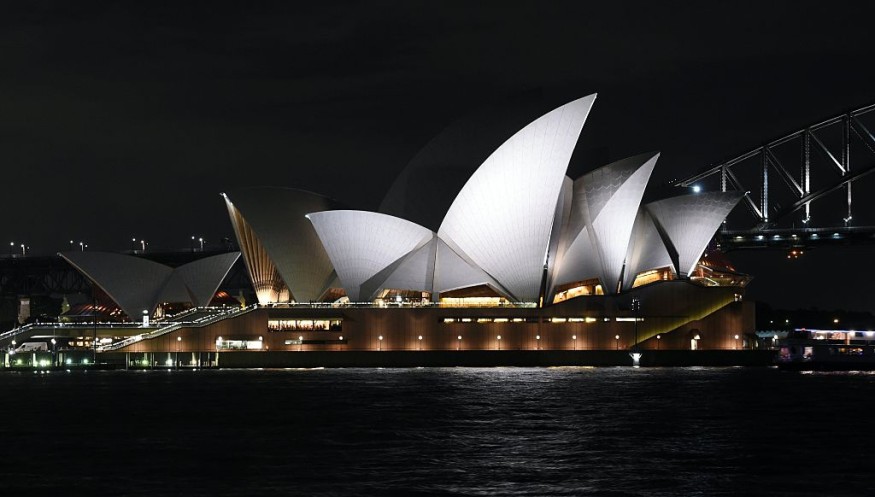Sydney Opera House: How Its Clay Tiles Stay Clean and 4 Other Fun Facts

One of the most prominent architectural creations is the Sydney Opera House. One innovative idea used for the building is installing clay tiles that stay clean.
Fun Fact #1: Sydney Opera House Design Won the Pritzker Prize
The Sydney Opera House, inaugurated in 1973, has attained global icon status, credited to architect Jørn Utzon's creativity. Its distinctive shell-shaped roofs captivate worldwide recognition. Utzon's innovative design earned him the prestigious 2003 Pritzker Prize, showcasing the feasibility of seemingly impossible architecture.
Chosen from 200 entries in a NSW government design competition, Utzon's winning sparse-line drawing, resembling the billowed sails of a ship, symbolized Australia's maritime heritage. Little did anyone anticipate the construction challenges behind this visionary design. The Opera House stands as a testament to overcoming architectural boundaries and remains an enduring marvel in modern architecture.
Fun Fact #2: The Roof Structures are Popularly Called Shells
The Sydney Opera House's renowned 'shell' structures aren't true shells but precast concrete panels supported by massive ribs. Engineer challenges arose in mathematically defining these shapes. Utzon's 1958 drawings veered from the initial competition design, presenting higher and pointed profiles, complicating construction.
Structural issues persisted, impeding progress until late 1961. Despite pressure to seek alternative engineering firms, Utzon persisted with Arup, believing in their collaboration. Ultimately, Utzon devised the solution himself. His unwavering confidence in the partnership with Arup prevailed, leading to the resolution of the complex construction challenges for the iconic Opera House shells.
Fun Fact #3: Design Based on Orange-Peeling
The Sydney Opera House's defining aspect, the shell-shaped roofs, relied on the discovery of the Spherical Solution-a mythical yet pivotal revelation. While myths credit Utzon's eureka moment to an orange-peeling episode, it was Saarinen who first demonstrated shell structures using fruit. Utzon's breakthrough occurred while arranging model shells, realizing their uniformity suggested derivation from a singular form, a sphere's plane.
This insight allowed prefabrication and uniform tiling, defining the Opera House's timeless silhouette and vaulted arches. Utzon's epiphany led to the Yellow Book submission in 1962, embodying spherical geometry as a binding and transformative idea, merging architecture with universal principles, culminating in the Opera House's realization.
Fun Fact #4: How Its Clay Tiles Stay Clean
Utzon envisioned tiles for the Opera House that harmonized with Sydney's blue hues without causing glare. After discovering Japanese ceramic bowls' granular texture, he collaborated with Höganäs, Sweden for three years to create the perfect Sydney Tile: 120mm square, using clay with crushed stone. 1,056,006 of these tiles form chevrons covering the shells. Utzon emphasized their importance as a large, reflective sculpture mirroring the changing sky.

The tiles, self-cleaning but needing upkeep, sport a glossy white-matte and cream chevron pattern, sourced from Höganäs AB. These ungus-resistant, these tiles elegantly reflect and mirror the sky's myriad lights year-round.
Fun Fact #5: Racked Up $102 Million on Construction Costs
The Sydney Opera House project faced unforeseen challenges. Construction, estimated at four years for AU$7m, lasted 14 years costing AU$102m, funded mostly by a state lottery. Architect Utzon resigned in 1966 due to cost and design disputes with the government, ending Cahill's persistent efforts to realize the iconic structure.
Fischer Homes on the Future of Personalized Home Design

Architecture's Response to the Seven Million Homes Shortage

Travis Scott Slams Victory Boyd in Explosive 'Telekinesis' Lawsuit: 'She Lied on Copyright'

From Digital Models to 3D-Printed Homes: Jaspreet Kaur Lall Explains How the Innovation Changes the Construction Industry

Future Belongs to Green Construction: Sampath Kumar Paspunoori Explains One of the Key Trends in the Construction Industry










